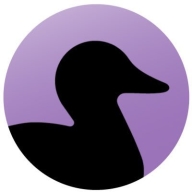

Black Duck SCA and Sonatype Lifecycle are popular software composition analysis tools that compete in providing open-source management solutions. While Sonatype Lifecycle offers extensive DevOps integration capabilities, Black Duck SCA provides more attractive pricing and customer support for budget-conscious organizations.
Features: Black Duck SCA offers automatic analysis of components with detailed vulnerability management and license compliance features. Its huge knowledge base and effective scanning of Docker binary files add value. Sonatype Lifecycle offers integration with DevOps tools like Jenkins, continuous security monitoring, and comprehensive policy management, allowing organizations to automate open-source governance effectively.
Room for Improvement: Black Duck SCA could enhance its vulnerability identification and improve accuracy in code scanning. It can also expand its integration capabilities with broader DevOps tools. Sonatype Lifecycle could simplify its initial setup process. Also, enhanced support for .NET environments and improved data quality in those areas could add more value.
Ease of Deployment and Customer Service: Black Duck SCA is known for its straightforward deployment and responsive customer support, aiding quick integration into existing systems. Sonatype Lifecycle may require more initial setup but offers thorough documentation and comprehensive deployment support. Its extensive integration capabilities may require more technical expertise but offer long-term benefits.
Pricing and ROI: Black Duck SCA's competitive pricing model and lower entry costs provide significant value in vulnerability management, making it a good option for budget-conscious businesses. Sonatype Lifecycle requires higher upfront investment but is capable of delivering substantial ROI through robust policy enforcement and DevOps integrations, justifying the cost for organizations seeking strategic long-term value.
If you're using it on critical external programs where there is regulatory compliance on ensuring that the source code is clean from open-source, there's substantial ROI.
We have seen cost savings and efficiency improvements as we now know what happens in what was previously a black box.
There are some pain points with the response time and first-level support quality.
They are helpful when we raise any tickets.
I would rate the scalability of Black Duck 8 or 9.
JFrog is easier to configure for high availability as it does not require extra components.
Sonatype Lifecycle is very stable, especially in the binary repository management use case for managing binary artifacts.
It can improve on the security side of it, specifically vulnerabilities identification.
There are areas for improvement such as false positives and the scanning of containers.
Black Duck does not have the SBOM management part.
We also noticed a lack of detailed information for configuring Sonatype Lifecycle for high availability and data recovery.
For larger numbers like our case with 1,000 user licenses, JFrog becomes much more cost-effective, roughly ten times cheaper than Sonatype.
The most valuable feature of Black Duck is the composition analysis feature, which is effective for security risk management.
Black Duck's ability to identify dependencies very accurately has been most valuable in identifying and mitigating risks.
The software composition analysis is most effective for security risk management.
The integration into our CICD pipeline enables us to continuously monitor code changes and identify new vulnerabilities.
The most valuable feature for us is Sonatype Lifecycle's capability in identifying vulnerabilities.
| Product | Market Share (%) |
|---|---|
| Black Duck SCA | 14.5% |
| Sonatype Lifecycle | 5.0% |
| Other | 80.5% |


| Company Size | Count |
|---|---|
| Small Business | 6 |
| Large Enterprise | 16 |
| Company Size | Count |
|---|---|
| Small Business | 12 |
| Midsize Enterprise | 8 |
| Large Enterprise | 29 |
Black Duck is an essential tool for software composition analysis and license compliance. It identifies vulnerabilities effectively and supports security management in DevOps environments, offering integration, performance stability, and community support.
Organizations rely on Black Duck for seamless integration in CI/CD pipelines, thorough scanning of source and binary codes, and management of operational risks associated with open-source and commercial licenses. It plays a crucial role in security risk management and delivers a robust policy management framework. Users value its ease of use and reliable community support while benefiting from its comprehensive dependency visualization capabilities. Despite its strengths, there is room for enhancement in integration with other tools, UI friendliness, and reporting features.
What are Black Duck's key features?
What should users look for in ROI?
Enterprise environments use Black Duck extensively for security, compliance, and risk management, ensuring software meets regulatory standards and mitigates vulnerabilities. Its implementation in specific industries aids in controlled and secure software development processes, underlining its role in maintaining rigorous security standards while delivering dependable performance.
Sonatype Lifecycle is an open-source security and dependency management software that uses only one tool to automatically find open-source vulnerabilities at every stage of the System Development Life Cycle (SDLC). Users can now minimize security vulnerabilities, permitting organizations to enhance development workflow. Sonatype Lifecycle gives the user complete control over their software supply chain, allowing them to regain wasted time fighting risks in the SDLC. In addition, this software unifies the ability to define rules, actions, and policies that work best for your organizations and teams.
Sonatype Lifecycle allows users to help their teams discover threats before an attack has the chance to take place by examining a database of known vulnerabilities. With continuous monitoring at every stage of the development life cycle, Sonatype Lifecycle enables teams to build secure software. The solution allows users to utilize a complete automated solution within their existing workflows. Once a potential threat is identified, the solution’s policies will automatically rectify it.
Benefits of Open-source Security Monitoring
As cybersecurity attacks are on the rise, organizations are at constant risk for data breaches. Managing your software supply chain gets trickier as your organization grows, leaving many vulnerabilities exposed. With easily accessible source code that can be modified and shared freely, open-source monitoring gives users complete transparency. A community of professionals can inspect open-source code to ensure fewer bugs, and any open-source dependency vulnerability will be detected and fixed rapidly. Users can use open-source security monitoring to avoid attacks through automatic detection of potential threats and rectification immediately and automatically.
Reviews from Real Users
Sonatype Lifecycle software receives high praise from users for many reasons. Among them are the abilities to identify and rectify vulnerabilities at every stage of the SDLC, help with open-source governance, and minimize risk.
Michael E., senior enterprise architect at MIB Group, says "Some of the more profound features include the REST APIs. We tend to make use of those a lot. They also have a plugin for our CI/CD.”
R.S., senior architect at a insurance company, notes “Specifically features that have been good include:
• the email notifications
• the API, which has been good to work with for reporting, because we have some downstream reporting requirements
• that it's been really user-friendly to work with.”
"Its engine itself is most valuable in terms of the way it calculates and decides whether a security vulnerability exists or not. That's the most important thing. Its security is also pretty good, and its listing about the severities is also good," says Subham S., engineering tools and platform manager at BT - British Telecom.
We monitor all Software Composition Analysis (SCA) reviews to prevent fraudulent reviews and keep review quality high. We do not post reviews by company employees or direct competitors. We validate each review for authenticity via cross-reference with LinkedIn, and personal follow-up with the reviewer when necessary.